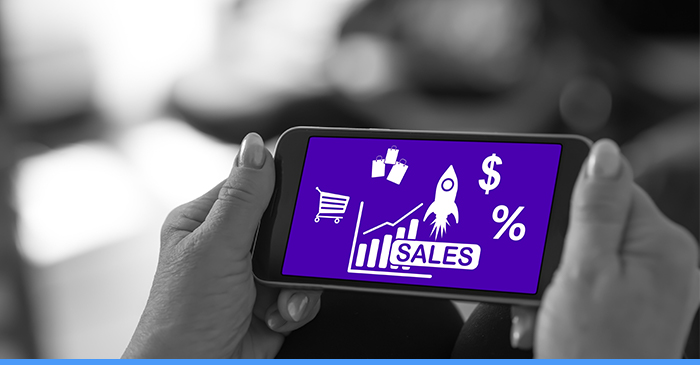
FinTech application, i.e., financial technology, has become the most popular mobile application development industry. The world of finance has experienced a transformation with the introduction of technology and its linked services. This industry has revived and is now referred to as FinTech, which combines finance and technology.
FinTech applications assist consumers in gaining greater access to loans, credit facilities, investment alternatives, banking services, and other services while providing some of the most convenient services. Moreover, FinTech has also helped people regain control over their finances and needs.
Building a FinTech app with perfection is essential to redefine monetary transactions using technology. Not all FinTech apps are perfect because some FinTech applications are not designed to meet customer needs, which results in clientele loss. Meanwhile, apps like PayPal and Venmo have maintained a firm hold on their respective marketplaces.
Must-Have FinTech App Features
The following FinTech app features should be a part of your app development:
1. User-First Navigation
Every FinTech application needs a navigation bar, which is an essential element. And the user should come first in the design process. Users should have enough space to scroll either horizontally or, ideally, vertically. Although vertical scrolling is more common, it’s crucial to take both horizontal wells and vertical scrolling designs into account to provide a balanced user experience. Footers make it evident that their pages provide additional information on Fintech goods and services.
2. Data Analysis
People who use many FinTech applications with data analytics loaded will have decision-making authority proportional to their spending, investing, and financial actions. Individual data analysis is essential for conducting financial studies and providing app users with reports so they can fully utilize their data. An in-app purchase-enabled FinTech application can do marketing and generate revenue, but it also needs analytics algorithms.
3. Blockchain

Numerous FinTech applications have embraced blockchain technology (a decentralized database system). Blockchain databases can now manage data faster thanks to developments in blockchain data centers. Fintech transactions are made with the utmost security thanks to blockchain technology databases that enforce a write-only protocol that makes it impossible to erase or tamper with any data. By reducing expenses and creating new business models, blockchain-based security can help establish financial models.
4. Personalized User Experience
Customers need tailored experiences when it comes to FinTech applications. They want an app that is handy and comfortable for them. FinTech apps must be adaptable and configurable to fulfill each unique user’s needs. Users can add their data and preferences through tools like user profiles. The app can then use this data to offer a personalized experience appropriate for the user. Setting spending objectives, using budgeting tools, and customizing notifications are other customization choices.
5. Voice-Assisted Banking
For creators of FinTech applications, voice interaction and identification are cutting-edge functionalities. Voice commands can be used by users to complete transactions and consult reports. The creation of FinTech apps that can run offline and without an internet connection has been made simpler thanks to speech recognition technology. Users can utilize voice commands to get information from personal virtual assistants like Apple Siri, Google Assistant, and Amazon Alexa via the online banking app without calling banks and customer support departments.
6. API Integration
Applications for third-party authentication provide varied services as part of their program. API is simple to integrate into mobile applications, asset management programs, and crowdfunding platforms. Customers can use the mobile app from their phone to receive wealth management services like investment notifications, automated portfolio adviser tools, and trading bots without using a regular computer. There is a significant improvement in functionality, power, usability, and efficiency with the integration of fintech solutions at the API level.
7. Multi-Tier Functionality
FinTech applications are on PCs and smartphones, so multiple-tier functionality is required for quick transactions. Service providers are obliged to maintain user-pleasing response times while managing multi-tier access. Businesses turn to service software because of two essential features: commission tracking and real-time notifications. Options like commission tracking and real-time notifications provide wiser results and constant awareness of your company’s investment status.
8. Biometric Sign-In

The online world opens up numerous new options for high-tech innovation while providing opportunities for criminals looking to profit. It is time to use predictive analytics and biometric sign-ins to build a highly secure payment system to address the rising security dangers. You can achieve long-term success and affordable client acquisition expenses by using customer segmentation.
9. Simplicity
Because of their complexity, financial sector areas like banking and insurance can take time to comprehend. This is because each part involves a blend of unique techniques and many viewpoints, which must be explored or gathered from several contributors. Given this, one may begin from a personal perspective and discover connections outside of what they initially take for granted. The most effective fintech applications contain basic functionality.
10. Friction-Free Form
Bad form design is one of the most frequent errors in user experience design. People prefer to fill out forms to accomplish objectives continuously. In this case, you can’t afford to prioritize form over functionality, especially if a sign-up form is one of the first things a user encounters after downloading the program. Whether using premium FinTech applications or freemium financial services, you must ensure the process is frictionless.
Conclusion
To ensure the success of your FinTech application, keep the following tips in mind:
Promote your app: If you don’t, you’d be doing months of arduous effort and your consumers an injustice. You found a solution for them; be a source of pride and ask them to use it.
Pay attention to your clients: Particularly if they give suggestions for how to make the app even better. A missed opportunity would result if this feedback were not taken carefully.
Ensure usefulness: To create an app that is more than just useful, consider user experience and interface design. Doing so will win over new clients and satisfy existing ones.
Utilize Arturo Digital’s expertise to launch and develop your mobile FinTech application. Our team of professionals makes it simple to study consumer behavior and market research for your mobile FinTech application. Include your application in the relevant investment services and streams. Doing so will enable you to increase your sales and boost your brand ROI.
Read more: Progressive Web Apps vs. Native Apps: What’s the Difference?